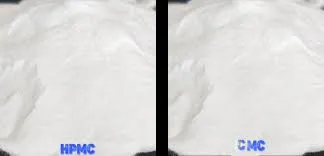
Oct . 12, 2024 01:13 Back to list
Applications and Benefits of Hydroxypropyl Methyl Cellulose in Various Industries
Hydroxypropyl Methylcellulose Versatile Uses and Applications
Hydroxypropyl Methylcellulose (HPMC) is a cellulose ether derived from natural cellulose, widely recognized for its versatile applications across multiple industries. This synthetic polymer is recognized for its unique properties, including water solubility, film-forming ability, viscosity control, and gelling capabilities. These attributes contribute to its utilization in various fields ranging from pharmaceuticals to construction materials. In this article, we explore the diverse uses of HPMC and the reasons behind its widespread acceptance.
1. Pharmaceutical Applications
HPMC is commonly used in the pharmaceutical industry due to its excellent binding and film-forming properties. It serves as an excipient in tablet formulations, where it helps improve the binding of active ingredients and enhances the stability of the tablets. HPMC is also used in sustained-release formulations, allowing for controlled drug release over extended periods. This provides patients with more manageable dosing schedules and improved therapeutic outcomes.
Additionally, HPMC is utilized in the production of ophthalmic solutions and gels. Its viscosity properties help create stable, easy-to-use eye drops that deliver active ingredients effectively. Moreover, HPMC is non-toxic and biocompatible, making it suitable for use in various medical applications, including wound dressings, where it promotes moisture retention and aids in the healing process.
2. Food Industry
In the food industry, HPMC functions as a food additive, enhancing texture and stability. It is used in products such as sauces, dressings, and bakery goods, where it helps improve viscosity and emulsification. HPMC can also replace fats in low-calorie foods, thus playing a crucial role in the formulation of healthier options without compromising texture or flavor.
HPMC acts as a thickening agent in gluten-free products, helping to mimic the properties of gluten and improve the overall quality of the product. Additionally, it serves as a stabilizer in ice creams and dairy products, preventing the formation of ice crystals and enhancing the mouthfeel of these items. Its versatility in the food domain is further recognized by regulatory bodies, where it is deemed safe for consumption.
3. Construction Industry
hydroxypropyl methyl cellulose uses

The construction industry has adopted HPMC primarily as a polymer modifier in mortar and cement-based products. It enhances the workability and adhesion of plasters, tiles, and paints, providing better consistency and ease of application. HPMC improves the water retention capability of mixtures, allowing for better hydration and curing of cement. This results in stronger, more durable structures.
Moreover, HPMC is used as a thickener in architectural coatings, ensuring a smooth application and an even finish. It also helps prevent sagging and improves the viscosity of the products, making it easier for contractors to work with.
4. Cosmetic and Personal Care Products
In the realm of cosmetics and personal care, HPMC is valued for its thickening and stabilizing properties. It is frequently incorporated into creams, lotions, and gels, providing a desirable texture and enhancing product performance. HPMC acts as a film-forming agent in cosmetic products, which can help prolong the wear time of makeup and provide a refreshing feel to skincare items.
Furthermore, due to its non-irritating nature, HPMC is ideal for sensitive skin formulations. This has increased its popularity in the production of sunblocks and acne treatments, where gentle ingredients are essential for consumer acceptance.
5. Other Uses
Beyond the aforementioned sectors, HPMC finds applications in various other fields such as adhesives, textile, and agriculture. In adhesives, it enhances the binding properties while maintaining a smooth consistency that allows easy application. In the textile industry, HPMC is used in sizing agents, ensuring fabric strength and softness. In agriculture, it can be found in seed coatings, aiding in the controlled release of nutrients.
Conclusion
Hydroxypropyl Methylcellulose exemplifies a multifunctional compound with a vast array of applications, showcasing its importance across several industries. Its unique properties and adaptability to different uses, ranging from pharmaceuticals to construction and food industries, underscore its significance in modern applications. As research continues to unveil new potential uses, HPMC remains a cornerstone ingredient, vital for innovation and quality improvement in a myriad of products. Whether in improving drug delivery systems, enhancing food textures, or contributing to sustainable construction practices, HPMC proves indispensable in enhancing both product performance and consumer satisfaction.
-
Versatile Hpmc Uses in Different Industries
NewsJun.19,2025
-
Redispersible Powder's Role in Enhancing Durability of Construction Products
NewsJun.19,2025
-
Hydroxyethyl Cellulose Applications Driving Green Industrial Processes
NewsJun.19,2025
-
Exploring Different Redispersible Polymer Powder
NewsJun.19,2025
-
Choosing the Right Mortar Bonding Agent
NewsJun.19,2025
-
Applications and Significance of China Hpmc in Modern Industries
NewsJun.19,2025







